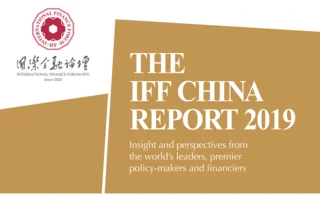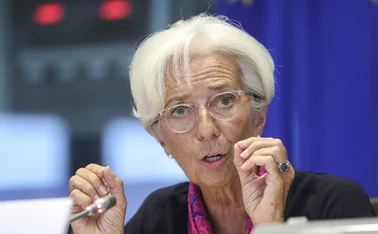
The securities surge


The 19th National Congress of the Communist Party of China (CPC) proposed supporting Hong Kong and Macao in integrating their own development into that of the overall state by prioritising the Guangdong–Hong Kong–Macao Greater Bay Area Development. This would enhance regional co-operation in the Pan-Pearl River Delta and advance mutually beneficial co-operation between the mainland and the two special administrative regions. Building an international financial co-operation hub in the Greater Bay Area is a concrete measure to implement an important strategy of the 19th CPC National Congress. The Bay Area Development is supplemented by great opportunities for improving the capability of investment banks in China’s securities industry.
Internationalising Chinese securities

The Greater Bay Area comprises nine municipalities – Guangzhou, Shenzhen, Zhuhai, Foshan, Huizhou, Dongguan, Zhongshan, Jiangmen and Zhaoqing – and two special administrative regions: Hong Kong and Macao. By the end of 2017, the overall urbanisation level of the Greater Bay Area exceeded 80%, and the regional economic aggregate surpassed RMB10 trillion for the first time. It has become a region with the most comprehensive strength, the highest degree of openness and the most dynamic economy in China.
At the 2018 National People’s Congress and the National Committee of the Chinese People’s Political Consultative Conference, President Xi Jinping indicated in his talks with the Guangdong delegation that it was necessary to seize this opportunity and accelerate the construction of a world-class bay area and urban agglomeration. Throughout the development of major bay areas around the world, finance has been a driving force. These bay areas give full access to finance and form a comprehensive financial services system and development mode: ‘finance + service’ in New York, ‘finance + technology’ in San Francisco and ‘finance + industry’ in Tokyo. Investment banks play a pivotal role in the modern economic system, and the Bay Area Development brings important historical opportunities to promote internationalisation in China’s securities industry. In particular, the Greater Bay Area’s unique features – ‘one country, two systems’ plus three different supervision systems – provide important development opportunities for China’s securities industry to forge strong adaptability and evolve its capacity.
The Greater Bay Area has become one of the most important settlements for securities companies in China. Among the 131 securities companies in China, 22 are located in Shenzhen and six in Guangdong. Of the mainland securities companies that established branches in Hong Kong, 15 are listed by issuing H‑shares. Five securities companies with branches in Hong Kong are listed independently on the Hong Kong Stock Exchange: Shenwan Hongyuan Group (Hong Kong), Haitong International Securities Group, Guotai Junan Securities, Southwest Securities and China Industrial Securities International.
The Greater Bay Area is also an important bridge for internationalising the securities industry in China. From the perspective of the cross-border business development practice of Chinese securities companies, the majority are tested in Hong Kong and then expand into the Asia-Pacific region – Singapore, for example – before eventually extending to European and US markets to form a global business network.
Last year, the Asian Financial Cooperation Association published The Greater Bay Area financial development report. Based on the analysis of industrial distribution and financial specialisation of various cities in the Greater Bay Area, the report concludes that the spatial distribution of China’s financial industry has gradually developed from revolving around Hong Kong to a ‘centre-periphery’ structure with Hong Kong, Shenzhen and Guangzhou as the core cities. Both Shenzhen and Guangzhou are slowly restructuring their financial centres to be more like Hong Kong’s, with the diffusion of function expected to continue to surrounding cities. The unique geographic advantages and development potential of the Greater Bay Area – as well as the three different regulatory systems – could not only maintain control over regional operational risks, but also serve as a frontier for comprehensive ‘opening-up’, providing an important experimental field for the internationalisation and development of China’s securities industry. Therefore, seizing the opportunities of the Bay Area Development, constructing free-trade zones, applying financial science and technology, and actively participating in the construction of the Greater Bay Area’s financial co-operation hub are highly significant in improving internationalisation.
Enhancing the capacity of investment banks
The 19th CPC National Congress proposed the strategic goal of China’s development should be to promote co-ordinated development of the real economy with technological innovation, modern finance and human resources. Investment banks play a role in financing capital supply and demand, promoting capital formation, encouraging enterprise mergers and acquisitions, optimising resource allocation, supporting scientific and technological innovation, and guiding risk management.
Investment banking originated in medieval Europe at merchant banks, the initial business of which was to accept merchant bills. During the Industrial Revolution in Europe, the scope of merchant banking evolved from its original services of helping companies raise capital and providing professional asset management and investment consulting services. After more than 100 years of development, modern investment banks have broken through the restrictions of traditional business frameworks – securities issuance and underwriting, securities brokerage transaction, and securities private placement, issuance and transfer – and have evolved from transaction to capital intermediaries.
From the perspective of world-class investment banks, the core business of modern investment banks is reflected in five aspects:
1. Risk management ability. Risk management is not only simple risk control, but includes risk identification, risk measurement and risk disposal – that is, the operating ability of businesses facing risks.
2. Investment transaction ability. In 2017, the market-making revenue of Goldman Sachs and Morgan Stanley accounted for 24% and 32% of total revenue, respectively.
3. Product design ability. Products are the main carriers connecting capital and asset. The professional services of first-class investment banks are finally reflected in the diversified product service system.
4. Financial and technological capabilities. The current evolutions of financial technology – known as fintech – are changing the business model and competition pattern of financial services. Using fintech to enhance business synergies and expand new business areas has become an important means for first-class investment banks to enhance their core competitiveness.
5. Asset pricing and research ability. Asset pricing is one of the most important functions of investment bank. It relies on the academic ability of the likes of research and analysis, which is a core competence.
Compared with first-class international investment banks, China’s are still in the foothills of development. China’s investment banks are small, with simple business models, weak anti-risk ability, low ability to create value, a lack of asset allocation solutions to complex professional problems, a lack of implementation based on the core competence of different development, and lagging international development. Their workings are not commensurate with the national strategy and the financial needs of building a modern economic system. Thus it is difficult for them to cater to the requests of high-quality, comprehensive financial services generated by government, enterprises, institutions and individuals.
However, the strength of China’s securities industry has been steadily improving. By the end of 2017, the total assets of 131 securities companies was RMB6.14 trillion, with an operating income of RMB311.3 billion and a net profit of RMB113 billion. The net asset scale at the end of 2017 was 2.94 times greater than that of 2011, which was 1.07 times and 1.05 times the growth rates of the two most successful international investment banks in the same period, Goldman Sachs and Morgan Stanley, respectively. This growth creates a development opportunity for China’s securities industry to enhance the capacity of investment banks in the new era of reform and opening-up.
The Greater Bay Area, as a key area for connecting the Chinese mainland’s financial system to the international financial system with its unique development environment, provides an important practice platform for China’s investment banks at the initial stage of development. Its various financial supervision systems and the multilevel capital market structure containing diversified financial business forms and degrees of development help swell the capacity of investment banks.
The securities industry and the BRI
Cross-border business is the embodiment of internationalising investment banks, and a concrete manifestation of China’s securities firms’ participation is the construction of the Belt and Road Initiative (BRI). As the internationalisation in China’s securities industry escalates, the contribution of cross-border business income to its total revenue is also increasing. In 2017, cross-border business income of domestic-listed securities companies in China was RMB20.448 billion, a year-on-year rise of 7.7%. The proportion of cross-border business income of the China International Capital Corporation, Haitong Securities and CITIC Securities was 17.5%, 17% and 11.8%, respectively. There remains, however, a huge gap with the first-class international investment banks: for example, Goldman Sachs generated 39% of its revenue and 77% of its profits outside the US in 2017. The internationalisation of the domestic securities industry is still in its infancy. The BRI promises a broad scope for China’s securities industry to expand its international business, and the Bay Area Development will play an important role as a bridge and hub.
The BRI is an open and inclusive platform for co-operation and a global public product created by all parties, which China has proposed to the world. The Greater Bay Area has a unique position and advantage in the national strategic layout.
On one hand, Hong Kong can exert its strengths, such as internationally compatible rules, strong professional service capability, global communication channels and high international recognition. Its economic ties with the mainland will not be weakened, but instead enhanced further by its positioning as a financial centre of the BRI. Equally, Macao can devote itself to economic and trade conventions, business exhibitions and a cultural programme.
On the other hand, Hong Kong and Macao form two convenient paths for the construction of the BRI in Commonwealth and Portuguese-speaking nations. Hong Kong has close and long-lasting associations with Commonwealth countries, including the UK, India, Singapore, Malaysia, Bangladesh, Pakistan, Sri Lanka, South Africa, Australia, New Zealand and Canada, which have a cumulative population of two billion. Macao has close relations with Portugal, Brazil and other Portuguese-speaking countries, with a total population of more than 200 million. These paths radiate out to reach Southeast Asia, the Middle East and Africa, and can be extended to Europe, South America and other areas along the Maritime Silk Road. China’s mainland securities companies can make full use of the financial co-operation hub function of the Greater Bay Area, actively participate in the construction of the BRI and vigorously expand international business along two convenient routes.
The SAC and regulation
As a legal services and self-regulating institution of the securities industry, the Securities Association of China (SAC) actively supports its members in deeply integrating into the development of the Greater Bay Area to build a financial co-operation hub. According to the Mainland and Hong Kong Closer Economic Partnership Arrangement, the SAC has established regulation for mutual recognition of securities, futures and fund practitioners’ qualifications between the mainland and Hong Kong. In other words, Hong Kong practitioners who have passed the mainland securities regulatory examination can apply to the association for the mainland securities qualification through simplified procedures. If a Hong Kong practitioner who has obtained the mainland securities qualification is employed by a mainland securities institution, their working experience in Hong Kong is deemed equivalent to the relevant working experience in the mainland. They may apply for the qualification certificate in accordance with the same conditions and procedures as the mainland practitioner. To date, a total of 1,014 Hong Kong residents have passed the mainland’s vocational qualification examination, 273 have registered and held professional certificates, and 362 have obtained professional qualifications through simplified procedures.
Currently, Macao and the mainland have not yet established mutual recognition of employment qualifications and simplified procedures for equal treatment, but 685 Macao residents have taken the mainland employment qualification examination, 298 have passed the examination and 28 have registered for the certificate of practice. Taking advantage of the implementation of the outline of the development plan for the Greater Bay Area, the prospect of realising a higher level of mutual recognition of qualifications and simplification of application procedures in the Greater Bay Area is exciting. This will create more convenient conditions for the integration of securities fields in the Greater Bay Area and build a financial co-operation hub there.
Only users who have a paid subscription or are part of a corporate subscription are able to print or copy content.
To access these options, along with all other subscription benefits, please contact info@centralbanking.com or view our subscription options here: subscriptions.centralbanking.com/subscribe
You are currently unable to print this content. Please contact info@centralbanking.com to find out more.
You are currently unable to copy this content. Please contact info@centralbanking.com to find out more.
Copyright Infopro Digital Limited. All rights reserved.
As outlined in our terms and conditions, https://www.infopro-digital.com/terms-and-conditions/subscriptions/ (point 2.4), printing is limited to a single copy.
If you would like to purchase additional rights please email info@centralbanking.com test test test
Copyright Infopro Digital Limited. All rights reserved.
You may share this content using our article tools. As outlined in our terms and conditions, https://www.infopro-digital.com/terms-and-conditions/subscriptions/ (clause 2.4), an Authorised User may only make one copy of the materials for their own personal use. You must also comply with the restrictions in clause 2.5.
If you would like to purchase additional rights please email info@centralbanking.com test test test







